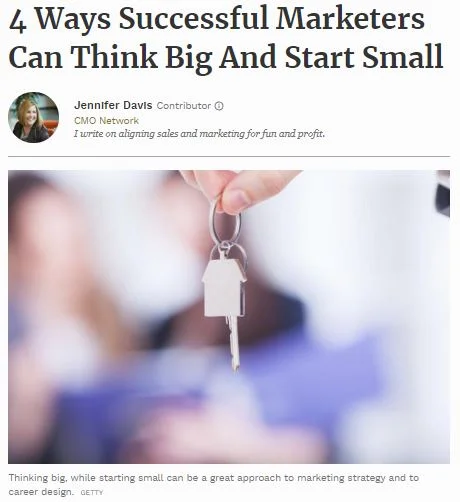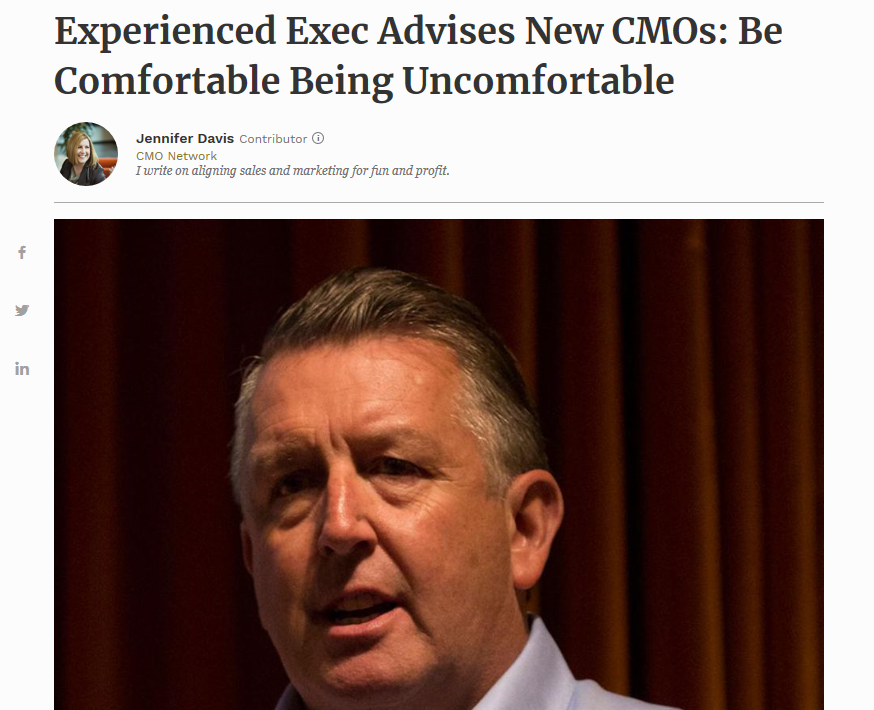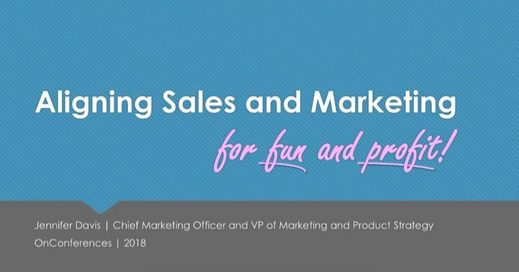See this article in Forbes on how one company, Suterra and their leader, Melinda Sych, puts the customer in the center of their marketing and sales efforts.
_________________________
At the heart of every successful customer-centric company is that they get paid for paying attention: to the needs of their customers and to the things that result in internal efficiency and effectiveness. By learning faster, while staying on strategy and on message, the results and rewards can be substantial.
What can a purpose-driven chemical company in a highly-regulated and competitive market teach you about building a customer-centric culture and driving great results? More than you might suspect.
Suterra offers biorational and healthy pest management alternatives for the agricultural industry and is a division of The Wonderful Company , a $4 billion private corporation comprised of healthy brands across consumer and industrial segments. Melinda Sych has served as the vice president of Commercial Operations for four years and is responsible for marketing and sales for Suterra, building on her engineering and business management experience at Dow Chemical, Asahi, and SEH.
In our recent interview, she shared several key principles that have been deployed at Suterra that are instructive for anyone wanting to foster customer obsession in their organization.
1. Focus for Impact
Suterra makes products that allow growers to reduce crop damage and increase their profits and output with healthy alternative pest management solutions. In her first days at the company, Sych met with customers to better understand the business. “When a customer told me that we were everything to everyone and nothing to anyone, it was telling,” she recalled. It was clear they needed a strategy to improve their chances of success and exceptional customer experience where it mattered most.
“Defining for your business what you are going to do is also defining what you are not going to do or what you are no longer willing to do,” Sych instructed. “And that focus must be for the business and for the functions.” Sych added that “you need to be able to answer the question, ‘Why aren’t we doing that?’” in a consistent way across the whole organization. This is easier said than done. Especially when customers themselves ask you for solutions outside your focus.
David Cooperstein, who ran the marketing leadership practice at Forrester and now provides strategic advisory services to startups and mid-stage companies with his company Figurr, has seen the same tension in companies across multiple industries. “It takes discipline to be willing to say that they can’t serve a particular vertical right now,” he shared in a recent interview. “Successful companies always pick a tight market to focus on, then expand once they have mastered each category.”
Sych summed up what this kind of discipline has meant to Suterra:
The success of focus is remembering that you can’t do everything and if you try, you are not going to do it well. As a leader, you need to remind your team what you are doing to accomplish your mission and be the best. The reason we aren’t doing other things is that it would dilute our ability to achieve the mission. There are millions of businesses that have tried to do everything and failed at everything. We want only to be the best of the best at our purpose. This helps not only build our brand with our customers, but also our employees, shareholders, and the industry.”
Advice you can use: Decide what your business is going to do and what you won’t do. And have the discipline and courage to stick with your strategy. You have to believe that focus will make you more successful when your resolve is tested.
2. Go Deep With the Customer
Increasingly in competitive markets, businesses are differentiating on experience and that requires a deep understanding of the customer. At Suterra “it’s all about the customer experience,” Sych said. “We want them to love using our products and to see it result in damage reduction. We must understand them.”
In their highly-technical sales they “take market analysis, competitive insights, product details and understanding of the customer problem, and we decide how we are going to position the product and what the typical use looks like in different segment markets,” Sych explained. For instance, in grapes alone there are many segments, Sych described, including various grades of wine grapes, table grapes, and raisins. The channels to market, the price points, likely applications, and the varietals vary widely across those segments. Suterra’s marketers need to have data to show the efficacy of the product in the most likely use cases. “The marketers work with our technical teams to understand agricultural practices in the segments and to gather the data required to properly position our products in our target segments,” Sych explained. They ask themselves “what makes the most sense and will have the most impact?” and they then target the use cases that have the highest impact on the management of a pest in that target segment. “We then price according to our principle of accessible return on investment,” she concluded.
This process is very involved when you need to prove outcomes with science and research as Suterra’s market requires. “In our highly-regulated business, there are lengthy product development cycles and sales processes,” Sych described. “We need to facilitate conversations with many parties and people to get feedback. For instance, we ask sales, customers, business development, and others for feedback on our labels, messaging, and use cases so that we can achieve our objectives.”
Launching product in this context requires highly segmented messaging, ROI data, and efficacy data aimed at the different decision makers for the different markets and extensive sales training to deliver the message. “In order to do this, we need to understand how our product makes our customers’ lives harder and easier,” Sych observed. “What equipment or products they will need to be successful. What support services they need to make it easier to use and more readily adapted across our key target segments." All of that insight comes through deep understanding of the customer.
Yet, even businesses without the regulatory requirements for evidence, need to provide reasons for customers to purpose the products or services that rely on a deep understanding of the customer needs.
Advice you can use: Whether your development cycle is three years or three days, whether you are selling B2B or to consumers, use that time to get feedback from key stakeholders and understand deeply the customer problem at which your solution is aimed.
3. Differentiate with Brand Experience
When Sych visited those first customers she asked why they bought the product. They answered “because it works.” She saw that as something to build upon.
“We are seen as an innovator and are often first to market,” Sych said with pride. “But competitors watch the filings and we only can count on a few year head start, as our compounds can not generally be protected with patents.” Suterra’s products are based on science often discovered and researched in university settings.
“If you can’t patent the inventions, then your messaging and brand is your differentiation,” Sych concluded.
This creates a high-stakes scenario where speed to market matters. “When anyone complains about others copying our work, I just ask ‘how can we do it better?’ It ups the game,” Sych observed. “Being first gives us the chance to learn about weaknesses in the market that we need to address. Competition makes us better by putting us on our toes and making us ready to respond,” she suggested. As a result of the competitive pressures Suterra’s “sales and marketing teams are listening better for information, they are analyzing, they are digging into nit-picky details, and they are paying attention,” Sych commented.
Instead of paying patent attorneys, we are paying attention to our customers.”
And what has been the result of this customer-focus? “Having a strong brand speeds up the time to market even in our highly regulated industry,” Sych remarked. The EPA and state registration and efficacy tests take time, but the market adoption curve can vary widely. “We just launched a new citrus product two years ago,” she recalled. “It went from nothing to 70% market share in two selling seasons after registration.” The credibility and customer confidence they had built in the brand, had earned them customer loyalty and trust and allowed them to over-achieve their sales targets. “We asked for pre-orders for this new product and were pleasantly shocked to book 95% of our annual sales by January of the year,” she added.
Advice you can use: Don’t focus too much on the competition and whether you have defensible protection. It can trap you into looking backward and may not be as secure as you would hope. Rather, focus on being the fastest learners in the marketplace for sustainable advantage.
4. Partner Internally
Cooperstein added that in his experience “the sales teams look to marketing for guidance. They want to know how to tell a better story than others in their space and how to win more business.” In short, “Sales needs to carry the company message, not just the sales numbers.”
Sych agrees on this kind of partnership and noted that at Suterra “Marketing is setting the message and Sales is responsible for delivering.”
The needs and roles of sales and marketing, even when they are part of the same organization as they are at Suterra, are different and require open partnership. “Field salespeople are busy and are dealing with day-to-day issues of their customers,” Sych said. “Marketing people are back in the office thinking it will be simple to follow the approach they have recommended.” In many companies, this can lead to silo thinking, pointing fingers, and breakdowns in relationships. In fact, InsideView’s Report “The State of Sales and Marketing Alignment in 2018” noted that negative perceptions between the groups leave 28% of sellers thinking they would do a better of marketing than their marketing colleagues and 23% of marketers believing they would do a better job of selling. However, the truth is that the groups need each other to be successful.
“There is a connection and dependency throughout the business and between sales and marketing,” Sych noted. “Whether they are on a single team or separated, they should be reminded that they need each other.”
In order for marketing to be successful, we have to hit our revenue targets. In order for sales to be successful, we need to have messaging and tools in the market. They should be incentivized together.”
Beyond having common goals, Suterra has created positions to act as bridges between sales and marketing. “Having people who own the products through the product launch helps facilitate sales success by improving the visibility of how this approach is being received by the market and allowing us to adjust our message or approach to better optimize the results in real time,” she commented.
Speaking to marketers, Sych had some final advice: “Marketing organizations have to be strong to do their job well. Confidence in the marketing organization is earned and learned.” Successful launches in which marketing and sales both see their unique contributions, help reinforce this confidence and mutual respect.
Advice you can use: Make sure the sales and marketing organization (or organizations) know how they win together and align goals and incentives. Celebrate the wins together and build upon that success.





































